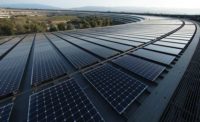On Oct. 2, Hawaii became the second state to propel alternative energy development by requiring power utilities to buy renewable power at specific prices under long-term contracts, a practice known as “feed-in tariffs.” Widely used in Europe, the rule has been effective in spurring project development, says Jamie Steve, director of government relations for San Francisco-based Pattern Energy Group, formerly Babcock and Brown’s North American energy development group. Vermont adopted similar requirements last month. Hawaii adopted the rule to help the state meet a mandate to have 40% of its power come from renewable sources by 2030. At least 33 states have similar but lower goals, either voluntary or mandatory.
The latest news and information
#1 Source for Construction News, Data, Rankings, Analysis, and Commentary
JOIN ENR UNLIMITEDCopyright ©2024. All Rights Reserved BNP Media.
Design, CMS, Hosting & Web Development :: ePublishing


Post a comment to this article
Report Abusive Comment